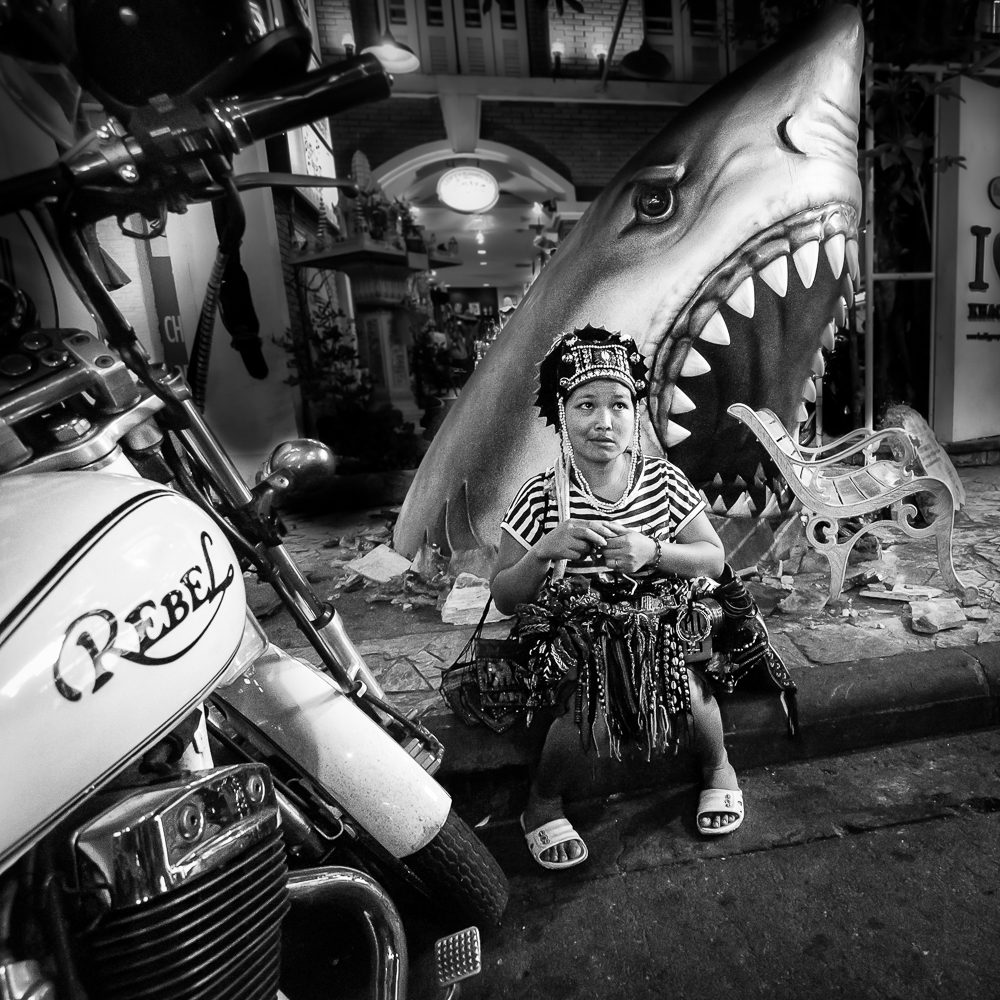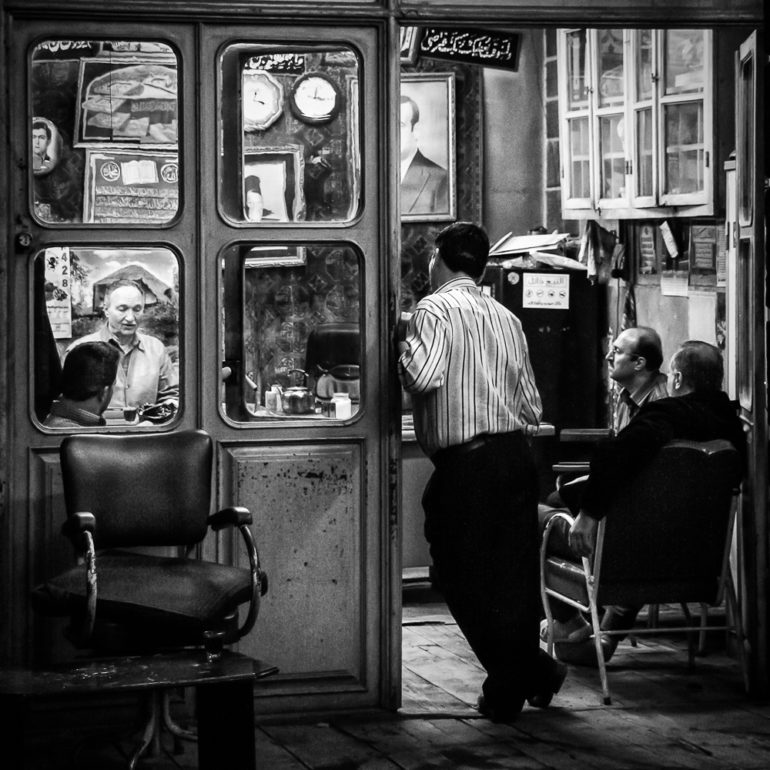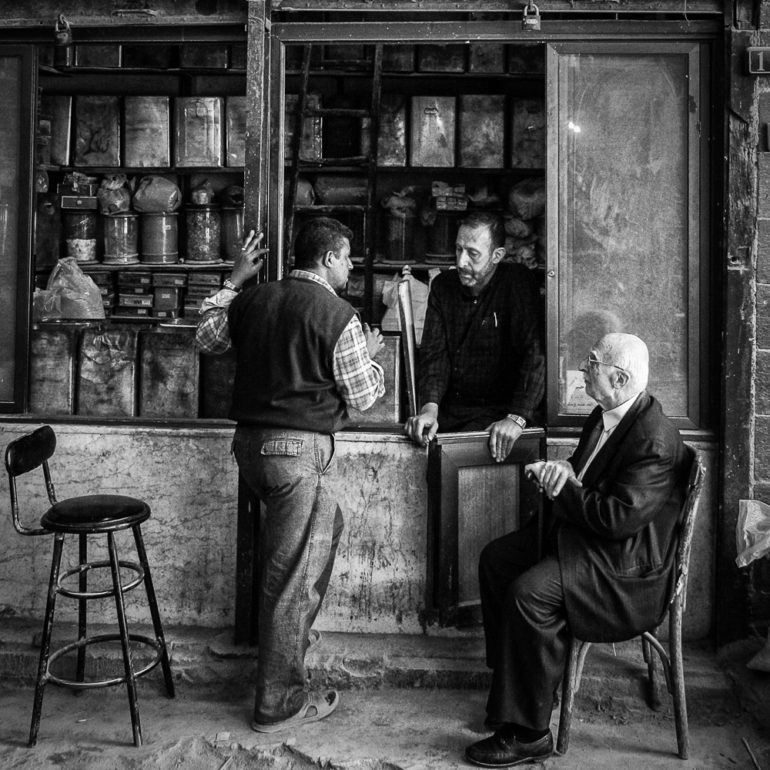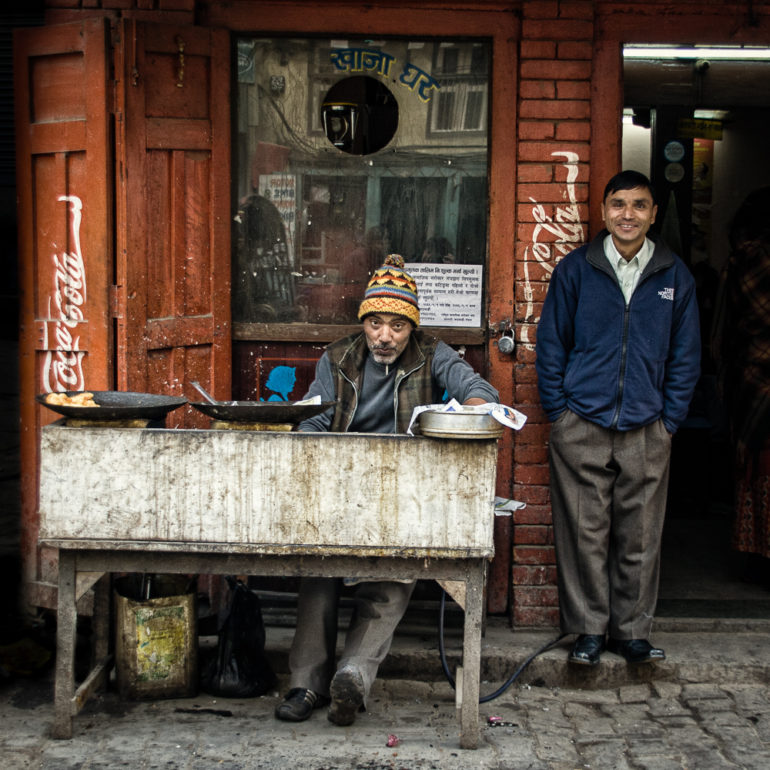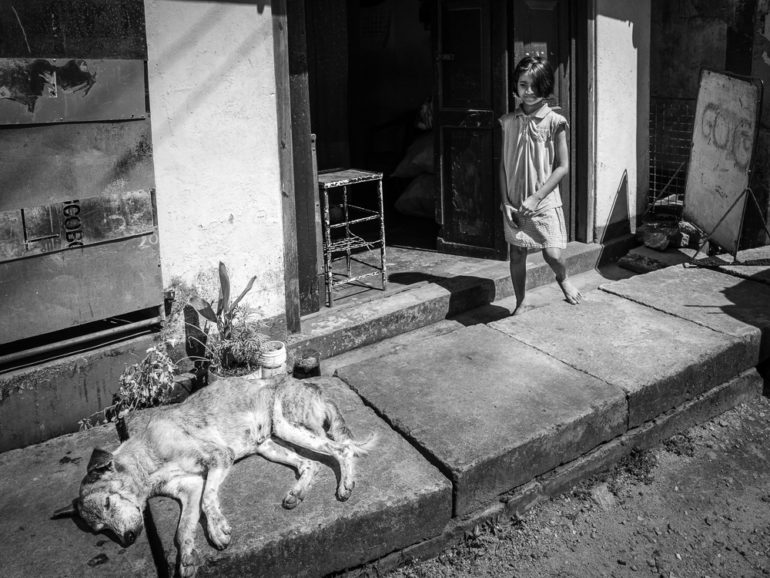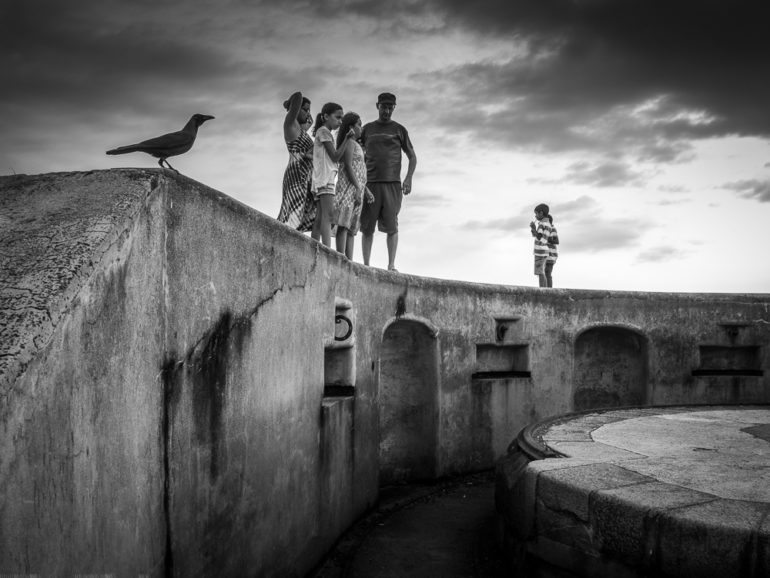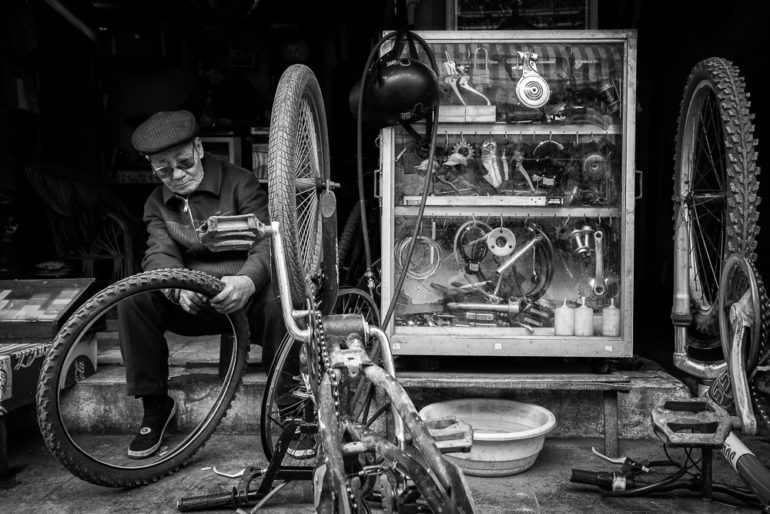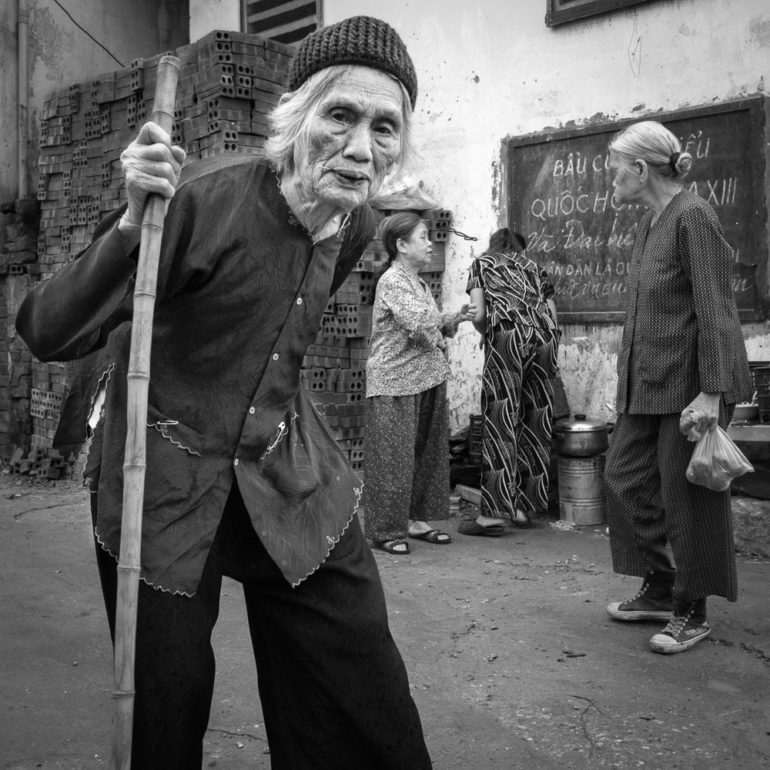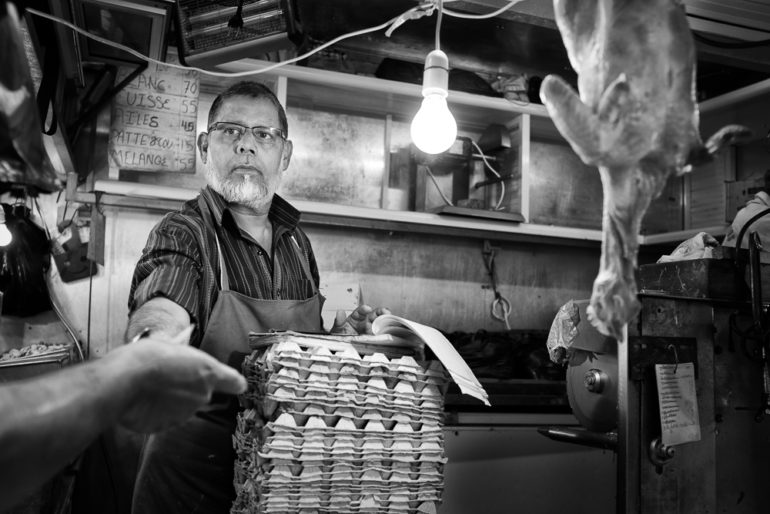All images by Michiel de Lange. Used with permission.
Photographer Michiel de Lange has a body of imagery that’s absolutely fantastic in that his candid street photography is edited in a way to look a bit like highly complex scratch drawings. The photos in the end look absolutely fantastic. “Originally from South Africa, I started meddling with serious photography in 1986 when my father passed on his old Asahi Pentax SLR and a few lenses to me.” Michiel tells us. “Using this camera, I spent a few years exploring and teaching myself photography in its basic, raw form, later upgrading to a used Pentax ME Super, which I continued to use into the early 1990’s.”
Michiel got more serious into photography with the advent of digital in 2003. These days, he calls his Leica Q and Fujifilm X100s his favorites.
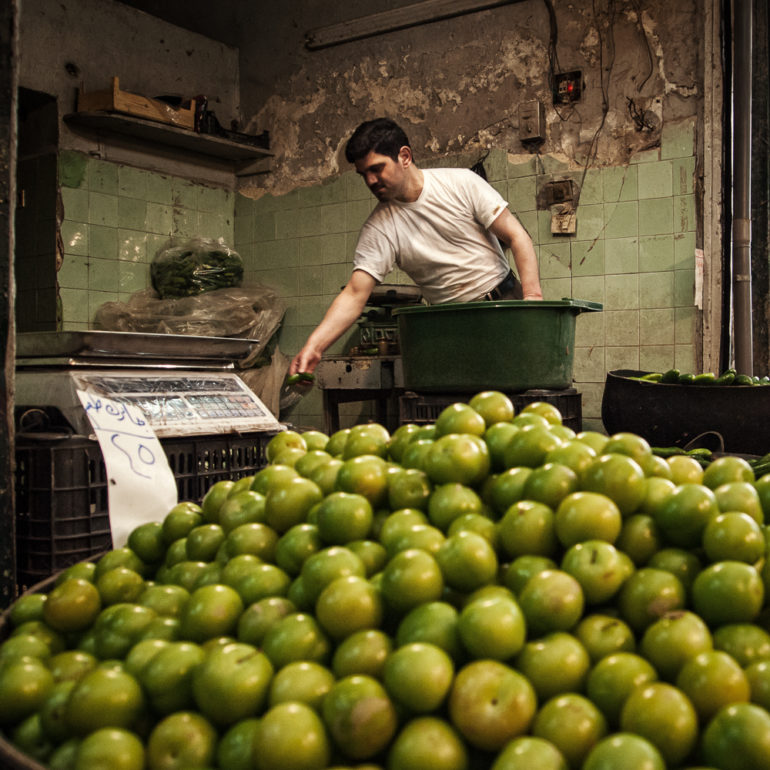
According to Michiel:
I consider myself as a “travelling street photographer”. My work is mainly inspired by a fascination with our “human condition”, capturing people and their daily lives within different cultural, religious and social environments as. I’m especially drawn to the real, often rustic lives of people earning their living on streets around the world, the results are expressed through a blend of street life-, travel-, documentary- and street portraiture genres, with a few random opportunistic captures and artistic projects in between. Recently I find myself increasingly drawn to black and white street work, as well as a new interest in fine art Architectural-, Rural and Urban Landscapes.
Having visited over 30 countries to date, I’ve also lived and worked as a practicing architect in South Africa, the UAE, Qatar, Vietnam, Thailand, Malaysia and India.
Phoblographer: Talk to us about how you got into photography.
Michiel: I’ve always been dabbling in fine arts, but ultimately it was the relative “immediacy” of photography that grabbed me in the mid 1980’s. At the time I started off with an old 60’s Asahi Pentax screw-mount body and a few lenses passed on to me by my dad. I dropped serious photography during most of the 1990’s, but gradually started picking up on it again from the early 2000’s onward as my fascination with new digital photography technology rekindled my interest. I was keen to explore the world of digital photography and haven’t stopped since.
Phoblographer: What made you want to get into street photography?
Michiel: It was also roughly at the same time that the opportunity to travel more, increased. This ultimately stimulated my interest in documenting what I experience and see on my travels. At first I avoided photographing people and focused purely on street details, architecture and scenery. Strangely, I felt that the “imperfect” form of the human clutters the stark, perfect graphic compositions I was after. It was only during a 2004 visit to a town called Tripoli (in the north of Lebanon) where I became fascinated with the antics of a crowd of kids that followed me around. After turning the camera on them, I was extremely pleased with the results.
I also recall taking a candid photo of an old man in his pigeon coop on the same day. I consider this image to be my first successful street / environmental portrait. Everything about that image just worked so well, the subject, background, light quality … Suddenly I was hooked, and I’ve never “unhooked” from street photography (including people) since.
This was later followed by a trip to Jaipur in 2007, which I still consider to be my first focused photography trip resulting in a small, but meaningful body of work. Apart from travelling, I’ve also been fortunate to have lived and worked in some really exciting places, which are the places that are represented in the majority of my work. Photography gave me that higher purpose to travel, or perhaps it’s the other way round. Don’t know anymore, but I do love observing and experiencing different cultures and locations and translating that into photographs.
Phoblographer: So tell us about your influences because your work is really unique in a subtle way that probably won’t be apparent to most people. How do you feel they influenced you?
Michiel: My influences are not really connected to any past street photography masters, but rather to the more recent past and current social documentary work, most notably Steve McCurry (especially his Afghanistan work), G.M.B Akash and Jonas Bendiksen. I guess this means that my work is more rooted in documentary photography. The amount of multi-layered qualities that each one of these photographers can pack into a single image (both technical and aesthetic) is astounding.
I’m also more interested in what the future of street photography holds. I strongly admire the contemporary, dynamic works of Indian street photographer Arindam Thokder and various Iranian street photographers who all seem to have a profound and remarkable creative and contemporary vision that make them stand out from the crowd. They all, with their unique visions and contemporary styles, sometimes challenge our perceptions of composition and aesthetics. They continuously inspire me to try harder and try new things, see things in a different way.
Further, I continue to develop a high appreciation for (what I would call) “contemporary urban landscape photography” such as the work of Jack B and Ralph Gräf, who demonstrate a refined ability to capture mundane scenes in a most pleasing, artistic way. Though not necessarily to everybody’s taste, their work radiates with “stories” about mankind, with or without any human subjects.
Phoblographer: Your work incorporates a sense of both urban geometry and proper, traditional street photography. You try to make all the lines perfect and you direct viewers on where to look. But at the same time as trying to create interesting geometric photos, you also try to focus on emotions and moments. How has your thought process over the years of shooting been shaped to capture photos like these?
Michiel: I’m a full-time architect (which is still my day-job), therefore have been trained to appreciate and work with qualities such as geometry, composition, mood, proportion and making “order” out of chaos. By understanding these “rules”, I think I also understand how to successfully break them, which I hope sometimes lead to the creation of something special. I also (unfortunately) have a fairly low level of tolerance for mediocrity and almost always go the extra mile to perfect some of those qualities that I can (or want to) control to make a better image.
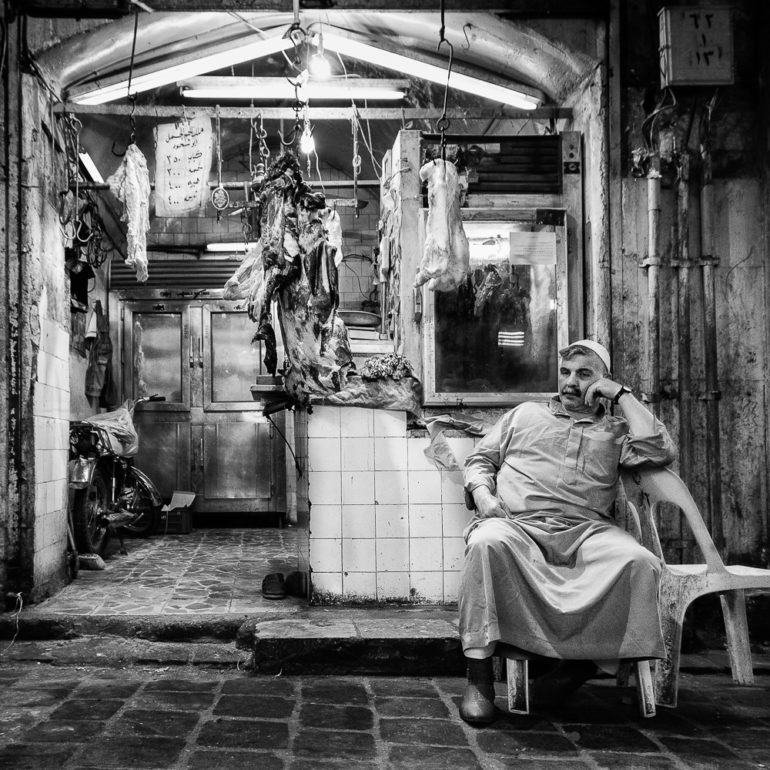
As for capturing those “moments”, most of my images are single shots, unless there is something interesting and stationary where I can work the scene at leisure. I sometimes wish that I rather use continuous busts to enable me to post-select the best frame, but that is simply not my habit and perhaps it never will be. Unfortunately, I do end up kicking myself quite often for missing a better shot as a result, but guess that I still have a small amount of film shooting mentality in me that will not change any time soon.
A lot of my work also tend to be scenes shot head-on, like a flat, framed theatrical stage set. I suppose it brings together and reinforces my view as an observer of mankind and their lives (as opposed to participating in it), wanting to capture the little stories we all have to offer to the public, and satisfying my inborn need for aesthetic order and composition.
Ultimately, successful images usually have a number of elements that all come together in some interesting way. I strive to capture as many of those qualities together as may be the minimum necessary to make an intriguing photo.
Phoblographer: What’s your editing and culling process like? Images like these probably don’t come around often so I imagine you’re brutal on yourself.
Michiel: Firstly, it has to be said that my website portfolio represent more than ten years of work, thus if I take only a few good photos a year, it all adds up over time. How do I cull? Firstly, I never “chimp” (probably again a remnant from my film days), thus all my culling starts after I’ve downloaded to my laptop. I guess I am quite brutal when first working through shots, which I tend to rate as 5 stars for “definites”, and 4 stars for “maybes”. Together, these shortlisted shots may be only between 5 and 10 % of all the frames shot. Nonetheless, it remains a highly subjective process that often gets it wrong. We all probably know that feeling when your “brilliant” shot tanks when you proudly unveil it to your public following, only for one of your grade B or C shots to be extremely well received. I don’t think that will ever change, even if somebody else curates your work. It’s hard to be brutally objective.
I used to extensively process and edit in Photoshop, but in recent years have gone back to basics with only Lightroom and the Nik Collection suite for a much more reserved, classic processing style. I usually first edit my images in color and then try a black and white version. If it translates well, I would focus on perfecting it further. I now try to avoid all kinds of editing trends, as they all tend to make one’s work look like outdated shit once the fad is over. I’ve reprocessed nearly my entire body of work as a result, something I don’t want to have to do ever again.
When on the road, I tend to download and edit on iPad (which is now so much better since more apps can manage RAW files). I then use mostly Snapseed (and sometimes a bit of Visco) for on-the-road social media and blog updates, but usually would re-process these images on my laptop once back home to ensure better output consistency.
Phoblographer: Do you feel like landscape photography has any sort of influence on your street photography? How so?
Michiel: I think any such influence is rather the other way round. When dabbling with landscapes, I almost always try to incorporate man-made elements. The man-made element humanizes the story for me, as opposed to the natural aesthetic qualities that make up more traditional landscape photography.
Landscapes are only a recent interest of mine, born mostly from a desire to try and make something of the mostly featureless, uninspiring desert environment where I currently live in Qatar (when I’m not travelling to escape it). Over the years, I feel like I’ve exhausted Qatar’s few obvious photogenic charms, but am still looking for ways to make the best of my time here. I don’t think that natural landscape photography will become a serious indulgence any time soon, but rather that it will help me to develop more towards serious urban landscape work.
Phoblographer: What makes you actually click the shutter? Meaning when you see a moment, what about a moment will make you compose and shoot immediately? Some photographers just shoot and others need to feel some sort of emotional connection to the scene; so what’s your motivation?
Michiel: In general, I look for a combination of any of the following: An Interesting character / subject, an interesting situation and a pleasing context or scene of some sort. I would’ve loved to also always consider light quality, but that is not so easy to consistently choose. I mostly deal with what I have. What then remains, is observing and deciding when to press the shutter. In some cases, I would identify an interesting “stage set” and wait to see what passes through, but most of the time I move around looking for something “on the fly”. I hardly ever just shoot indiscriminately, as I prefer to try and control as much as possible of what is available to me to work a scene without physical intervention. I sometimes regret working like this, as I tend to also miss many opportunities that could’ve been grabbed through a more spontaneous shooting mentality.
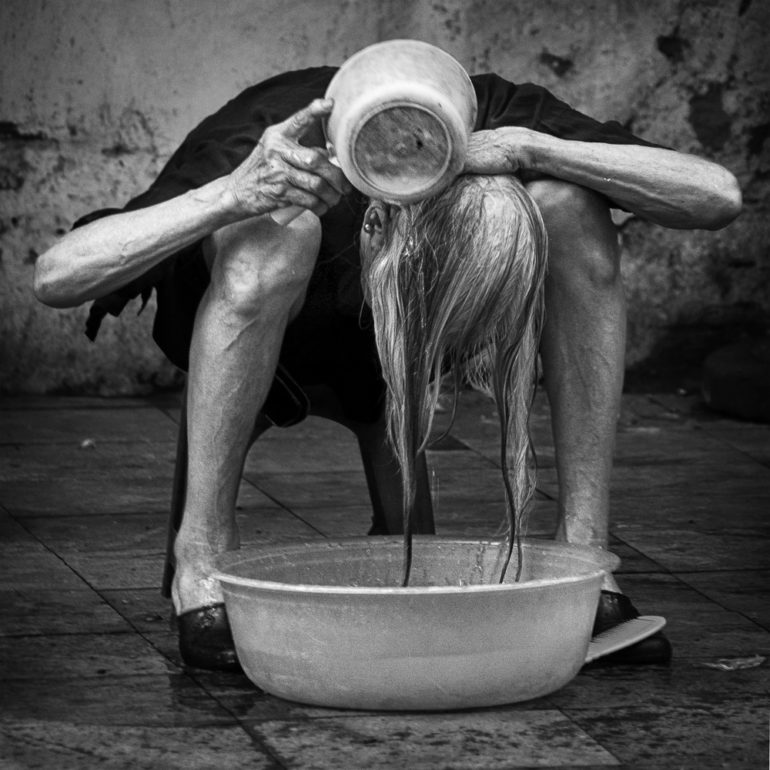
For street portraits my criteria is the same, but the “moment” is usually better defined and predictable as the very moment they make first eye contact. Many (if not most) of my street portraits look like they have been posed, but all are actually candid, single shots taken like this. In some cases, the subject would not even realize that I’ve taken such a portrait of them.
I’m still trying to force myself to be more sensitive in reading other hidden emotional opportunities. I thoroughly admire photographers who manage to make something out of “nothing” through (probably) a refined sense of observation and deep emotional sensitivity. I don’t have that skill yet, and it just doesn’t come naturally to me either.
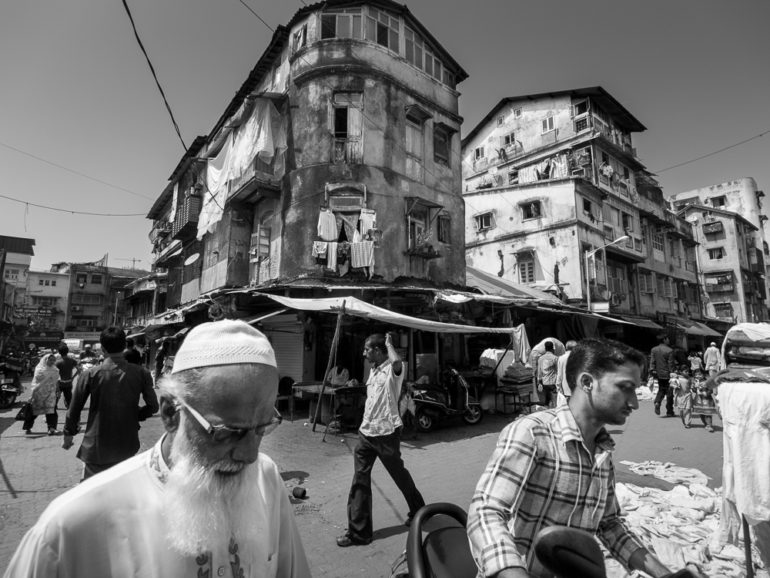
Phoblographer: You’re a photographer that specifically separates their portfolio by black and white and color. Why? Do you feel that when you’re shooting one vs the other that you enter a different mind-set?
Michiel: This is purely a personal presentation consideration. Most of my social media postings are mixed, as is my “Latest” works section on my website. In my case, I think images relate to each other better and strengthens the whole when grouped in color or black and white. I’ve tried other methods of grouping my work, such as by destination or similarities in subject matter, but think that these methods are better suited to documentary photographers who work on defined projects. Though a lot of my work have strong ties to particular destinations, and if I want, can be sorted into a number of different collections, the images still rather stand strong on their own.
I don’t shoot thinking in black and white or color. I focus on the scene, subject and the moment. The quality of a scene usually also involve my assessment of the colors and tones that are present, thus subconsciously, I probably always shoot in color. The decision for color and / or black and white comes during post-processing and is determined by which option works the best for the particular story. Regardless, I’ve developed a strong bias towards black and white over the past year or two.
Phoblographer: How do you want your work to evolve over the next year and how do you plan on making it evolve?
Michiel: My life consist of too many unpredictable elements to be sure, as I’m gradually becoming more restricted in my ability to travel due to serious, incurable personal health challenges. As a result, I’m gradually trying to move away from searching out the more challenging, rustic destinations and scenes that generally inspire me. Instead, I’d like to move towards developing a better sense of identifying opportunities in the more mundane, everyday environments we live our lives in. In order to become more comfortable in this, I will have to search for something deeper to inspire me. It will also hopefully serve to expand my photography opportunities, as I will not have to rely so much on the qualities that a new travel destination offer to be creatively inspired.
Most probably, I will also focus more on urban landscapes, inspired by qualities such as geometry, color, composition, juxtaposition and mood. My work is becoming more wide-angle “contextual”, i.e. including more of the surrounding environment as part of the story, rather than the tightly composed work I produced earlier. I often hear the description “cinematic”. Perhaps this is what I’m trying to achieve, but I’m not entirely sure how “cinematic” photography is defined.
For street photography to survive beyond the current “onslaught of the masses”, it has to continue to evolve and become better all the time to remain relevant. That’s why I’ve expressed by appreciation for the fresh contemporary approaches of some photographers mentioned before. I hope to continue growing towards more “cutting edge” work with a strong recognizable personal style, and wouldn’t mind being recognized as a one of a relatively few valued contributor towards contemporary street photography as an art form, instead of becoming obsolete.
But, of course, while working on developing these skills, I will continue to travel as much as possible, as long as possible!
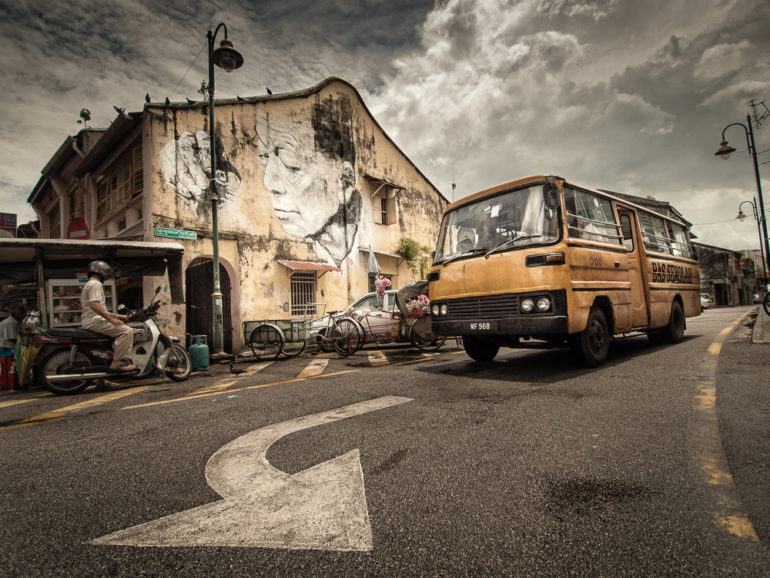
Be sure to check out more of Michiel’s work on Instagram.
Links to referenced photographers:
Ralph Gräf: https://www.graef-fotografie.de
Jonas Bendiksen: https://www.jonasbendiksen.com/
Steve McCurry: https://stevemccurry.com/
Arindam Thokder: https://www.flickr.com/photos/arindam_thokder/
Jack B: https://www.flickr.com/photos/real-figments/
G.M.B Akash: https://www.gmb-akash.com/


